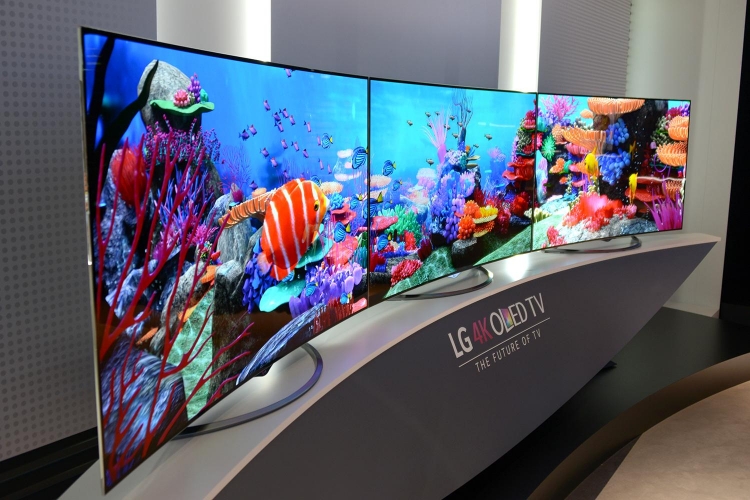Wall Luxury TV Set by Samsung Measures a Full 292 Inches!
Do your friends brag about the size of their TV sets? Are you jealous of a neighbor with a 65-inch screen on the wall in his living room?

Rejoice, then! Within a few months, you’ll have a chance to buy a TV set that outclasses all others in your neighborhood- IF you have the budget and the room for it. A few days ago, Samsung Electronics demonstrated a TV set, called The Wall Luxury, that measures a whopping 292 diagonal inches. That’s over 24 feet. For all of its monumental dimensions, though, it’s only 30 millimeters thick- slightly over an inch.
In addition to extreme size, Samsung’s new video display boasts a record-setting refresh rate of a blistering 120 Hz and a brightness level of 2000 nits. Most TV sets manage only 60 Hz and 250 to 500 nits. A few HDR-capable screens can be as bright as 1000 nits.
How much does it cost?
“So”, you might be asking, “how much do I have to pay for this amazing new TV set?” Well, if you have to ask, you can’t afford it. Samsung has not revealed its suggested retail price for The Wall Luxury. But its closest competitor, dubbed simply ‘The Wall’, a now-outclassed and utterly humiliated 146-inch model, sells for $100,000.
If this is still too much for you, Sony sells a 98-inch screen for a mere $70,000. Of course, you’d have to accept the embarrassment of knowing that you’ve settled for the third place finisher.
Is size all that counts?
As impressive as Samsung’s Wall is, it might not be right for you. In fact, if you’re going to pay a premium price for a TV set, we recommend thinking less about size or even resolution, and more about factors more directly and more dramatically affecting the quality of the picture and sound. These other factors are display format and HDR.
Once you have a screen measuring at least 55 inches diagonally, adding more size is unlikely to add much to your enjoyment of the picture. And while HD was a massive and obvious improvement over SD in picture quality, upgrading from HD to 4K, 5K, or 8K will do little for you unless you’re sitting within six feet of the screen.
If you’re willing to pay the price for quality, we recommend buying a good OLED set with HDR capability. For now, OLED is the best available display technology, with the darkest blacks and most intense color gamuts. HDR (high dynamic range) provides the widest available color range, and the most accuracy and subtlety in mid-range and shadows. Is your vision normal? Do you watch TV from more than three feet away from the screen? Then HDR is likely to do more for your enjoyment of the picture than 4K or higher resolution will.
We are your source for HughesNet internet service. For the best deals in all home services, shop with Satellite Country. We can help.


